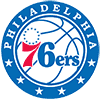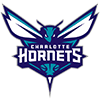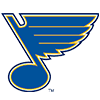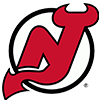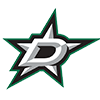STATE OF THE FRANCHISE
Despite a compressed schedule most thought would wreak havoc with older teams, the Spurs rolled to the best overall record in the West and swept their first two playoff opponents - the Jazz and Clippers - before falling to the Thunder in the Western Conference Finals. But that success masked the fact that this is a team in decline. Age is the biggest reason - Tim Duncan is 36 and was limited to just 28 minutes per game last season, and Manu Ginobili is 35 and missed 34 of 66 games with his annual spate of injuries. Tony Parker has really become the key to the Spurs' offense - and success. That signifies another major shift for this team. The championship-era Spurs won with stifling defense and efficient offense. But San Antonio's current roster, with past-their-prime Duncan, Ginobili and Stephen Jackson playing major roles, Parker at the point and Boris Diaw in the middle, really isn't able to play defense at that level. This season, we could start to see the focus of the team shift to a new generation of Spurs, led by forward Kawhi Leonard.
PLAYING TIME DISTRIBUTION
Gregg Popovich has mastered the fine art of manipulating minutes and DNPs to keep his key players healthy and fresh for the stretch drive. The Spurs' starters generally don't play what would qualify as "starter's minutes" on most other teams. Duncan has averaged just over 28 mpg for the last two seasons, Parker hovers right
STATE OF THE FRANCHISE
Despite a compressed schedule most thought would wreak havoc with older teams, the Spurs rolled to the best overall record in the West and swept their first two playoff opponents - the Jazz and Clippers - before falling to the Thunder in the Western Conference Finals. But that success masked the fact that this is a team in decline. Age is the biggest reason - Tim Duncan is 36 and was limited to just 28 minutes per game last season, and Manu Ginobili is 35 and missed 34 of 66 games with his annual spate of injuries. Tony Parker has really become the key to the Spurs' offense - and success. That signifies another major shift for this team. The championship-era Spurs won with stifling defense and efficient offense. But San Antonio's current roster, with past-their-prime Duncan, Ginobili and Stephen Jackson playing major roles, Parker at the point and Boris Diaw in the middle, really isn't able to play defense at that level. This season, we could start to see the focus of the team shift to a new generation of Spurs, led by forward Kawhi Leonard.
PLAYING TIME DISTRIBUTION
Gregg Popovich has mastered the fine art of manipulating minutes and DNPs to keep his key players healthy and fresh for the stretch drive. The Spurs' starters generally don't play what would qualify as "starter's minutes" on most other teams. Duncan has averaged just over 28 mpg for the last two seasons, Parker hovers right around 30, and Ginobili comes off the bench for between 25 and 30 when healthy enough to manage that workload. Even younger players like Leonard and Danny Green were held to similar averages last season, a trend that should continue this year. Look for Pop to open most games with Parker and Green in the backcourt, Leonard and Duncan at the forwards and Diaw in the middle. Key subs like Ginobili, Stephen Jackson, Matt Bonner and Tiago Splitter will all get 20-25 minutes on average. The backup point guard job could go to ex-Trail Blazer Patrick Mills or French combo guard Nando de Colo.
PLAYER OUTLOOKS Center
Boris Diaw: Diaw resurrected his career in San Antonio last season, and has signed a two-year deal to stay with the Spurs. In Charlotte, he was criticized for being out-of-shape and ineffective. But after joining the Spurs, his field goal percentage jumped from .410 to .588 and his three-point percentage surged from a dismal .267 to a remarkable .615. He seems an excellent fit in the Spurs' offense; Popovich has had a lot of success using perimeter-oriented big men to create space for Duncan's post-ups and Ginobili's drives. The heavy European influence on the Spurs roster - Diaw is one of three French players with San Antonio this year - can't hurt.
Tiago Splitter: A tough, physical defender, rebounder and shot-blocker, Splitter might have a more important role in the Spurs' rotation if he wasn't such a dismal foul shooter. His free-throw percentage hovers in the 50-60 percent range, which leaves the Spurs vulnerable to "hack a Splitter" strategies in close games.
DeJuan Blair: An under-sized but very strong scorer and rebounder, Blair was a key part of Gregg Popovich's rotation for much of the 2011-12 season, but lost playing time to Boris Diaw and Kawhi Leonard towards the end of the year and was a non-factor in the playoffs. He could be on the trading block this season.
Forward
Tim Duncan: Duncan's not a sexy pick any longer. He won't elicit oohs and aahs when you select him in the fifth round or later. Consistency rarely gets a reaction. San Antonio coach Gregg Popovich continued his Duncan preservation project, limiting the big man's minutes to 28 per game last season, in addition to giving him occasional nights off. Duncan averaged 15.4 points and 9.0 rebounds per game despite the drop in minutes--lower than his career per-game averages--but his per-minute numbers remain static. And those per-game averages were up from the career-lows he set the previous season. He hovered around 50 percent shooting (49.2) and blocked more than a shot per game (1.5). We know the downside by now: his free-throw shooting remains in the 70-percent range, the reduced minutes, and his age. Duncan will be 36 when the regular season tips off. The Spurs re-signed him for another three seasons this offseason. If you don't jump too early, Duncan should be a great value pick from the fifth round and beyond.
Kawhi Leonard: In Leonard, the Spurs got exactly what they thought they were getting with the 15th pick in the 2011 NBA Draft--a starting small forward with a good motor and the ability to guard multiple positions. He might be a better real life player than a fantasy player, because the Spurs' depth means that Leonard likely won't see typical starters minutes. However, in the 24 games he started at forward last season, Leonard averaged a solid 9.4 points, 5.5 rebounds and 1.5 steals per game, while shooting 52 percent from the field, 40 percent from three and 81 percent from the line. Assuming he sees slightly more than the 25.7 minutes per game he averaged as a starting forward last season, and assuming he takes a leap in his second year, there is a lot of potential here. One possible area for regression is Leonard's three-point shooting. He was never a 30 percent three-point shooter in college, so his 37.6 percent mark for the 2011-12 season was quite an improvement.
Matt Bonner: The ultimate "stretch four," Bonner's job is to create space for the offense by camping out at the three-point line and hitting jumpers. He excels at the role, hitting over 40 percent of his threes last season - a little under two makes per game in about 20 minutes of run. For fantasy purposes, he's strictly a specialist and won't contribute much of anything in other categories.
Stephen Jackson: Jackson sent from Milwaukee to Golden State at the trade deadline. The Warriors then shipped him to the Spurs, where he had played in 2001-03. He's a good fit in San Antonio due to his ability to play - and defend - multiple positions and hit three-pointers, but on a team this deep he probably won't have the opportunity to generate fantasy-relevant numbers. His primary role will be as backup to Kawhi Leonard at the small forward spot.
Guard:
Manu Ginobili: After two years of relative health, Ginobili missed 32 of 66 games and struggled to 12.9 points per game, his lowest output since 2003-04. Part of that decline can be attributed to Ginobili only seeing 23.3 minutes of court action per game, as coach Gregg Popovich limited the playing time of veterans like Ginobili and Tim Duncan during the lockout-shortened season, particularly in games played on back-to-back nights. Ginobili will be 35 this season and likely didn't do his body any good by tacking on extra mileage with Argentina in the Summer Olympics, though he did finish as the tournament's third highest scorer. No longer hampered by the hand injury that cut his season in half, Ginobili should rebound somewhat in 2012-13, even though his years in the NBA are likely numbered. Ginobili should produce somewhere between his level of production from last season and 2010-11, where he accumulated a stat line of 17.4 points, 4.9 assists, 3.7 rebounds, and 1.5 steals per game. However, even if an improvement is in order, don't expect Ginobili to exceed 30 minutes a game, no matter whether he's used as a starter or as the sixth man. Ginobili's best days might be behind him, but he can still bring considerable value if he's drafted appropriately.
Tony Parker: With Tim Duncan closing in on the end of his stellar career and Manu Ginobili always nursing one injury or another, Tony Parker has become the primary driver of the San Antonio offense. "Driver" is the operative word, of course--Parker has never been much of an outside shooter. Defenses play him to make plays off the dribble, but they still have no end of trouble staying in front of him. That said, he's never been a top-tier option in standard fantasy leagues because points and assists--and a pretty good shooting percentage--are essentially all you'll get. Parker has never been a particularly good source of steals, doesn't rebound much, and is a poor three-point shooter. He was injured early in the offseason when caught in a nightclub melee involving two rappers, but was able to recover in time to play for Team France at the London Olympics. He should have a clean bill of health well in advance of training camp.
Danny Green: Whether coming off the bench or starting, Green's playing time fluctuated all over the place last season, making it frustrating for fantasy owners to count on him from night-to-night. Even so, it amounted to a career year for Green, who had been used mainly as bench filler prior to last year. Green averaged 9.1 points, 3.4 rebounds, and 0.9 steals per game in about 23 minutes of action per night. Perhaps more noteworthy was his prowess behind the arc, as he hit 1.5 threes per game at a 43.6 percent clip. The quintessential Spur, most of Green's value often lies beyond the box score, but after he was signed to a three-year, $12 million deal in the offseason, he could be primed for an increased role this season. Veterans Tim Duncan and Manu Ginobili had their minutes managed more carefully last season, and additional cuts in their playing time could be on tap in 2012-13 to preserve the two for a playoff run. If that were to occur, Green, as well as Kawhi Leonard and Tiago Splitter, would seem to be the primary beneficiaries of the surplus playing time.
Patrick Mills: Mills finished the 2011-12 season with the Spurs after playing in China during the lockout. He has some scoring ability - he posted back-to-back 30-point games in the last two contests of the year - and could carve out a decent-sized role as primary backup to Tony Parker.
Nando de Colo: The Spurs' second-round pick in the 2009 draft, de Colo joins the team after playing the last several seasons in Spain. He averaged 13.1 points, 3.1 rebounds, 2.9 assists, 1.7 steals, and 1.4 three-pointers in 27 minutes per game for Valencia in 2011-12. He has good size for a guard (6-5) and the ability to play either backcourt position.
Gary Neal: Three-point specialist could get minutes at either guard spot, but given the Spurs' overall depth and de Colo's arrival from Spain, he could also end up racking up quite a few DNPs.
SLEEPER
Tim Duncan: At this stage of his career, Duncan has progressed from "superstar" to "deeply underappreciated." He won't generate first-round numbers - given his troubles at the free-throw line, Duncan wasn't really a first-rounder even at the height of his career. But he's remarkably consistent and still produces good-to-very good numbers in most fantasy columns on a nightly basis.
BUST
Danny Green: Green was a key to the Spurs success last year and earned a three-year contract extension. But much of his fantasy value game from much better than expected three-point shooting; he hit 103 treys in 2011-12 after hitting 13 total in his first two seasons in the league. And much of his playing time came because Manu Ginobili missed more than half of the season. Don't be surprised if Green's production is flat or takes a slight hit in 2012-13.











